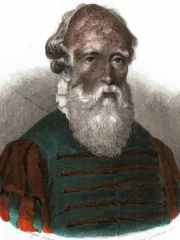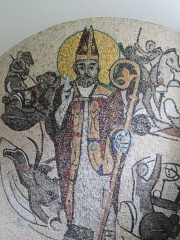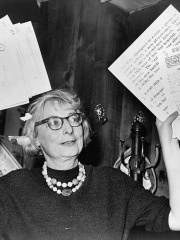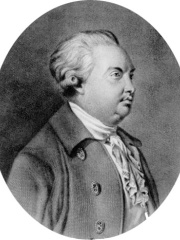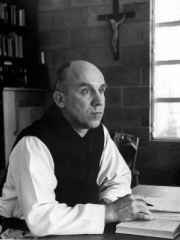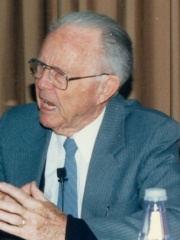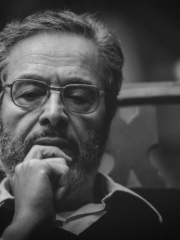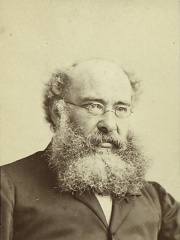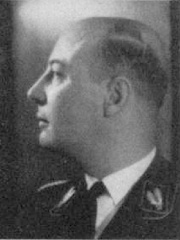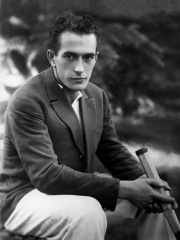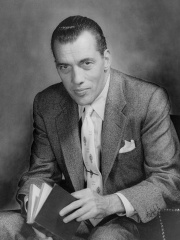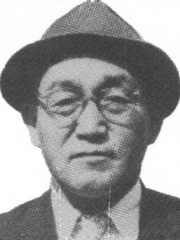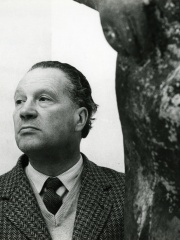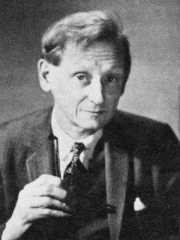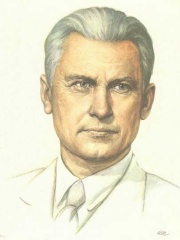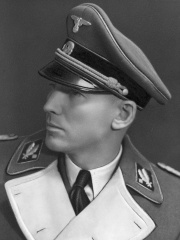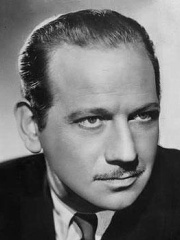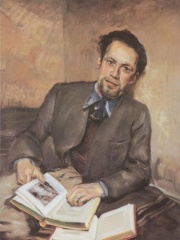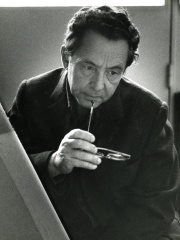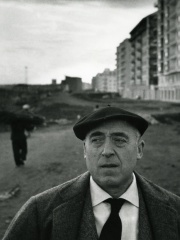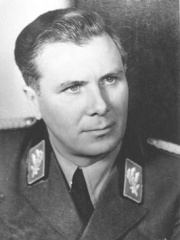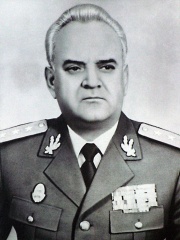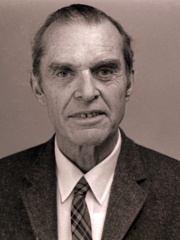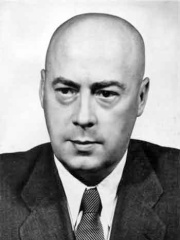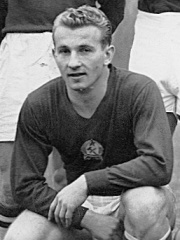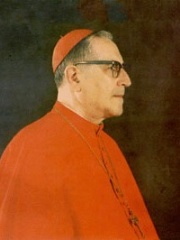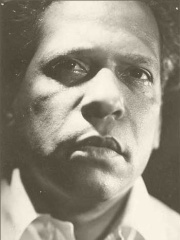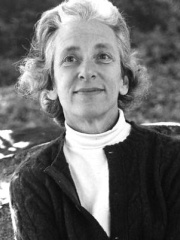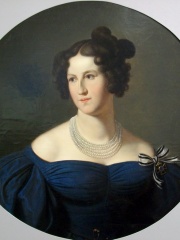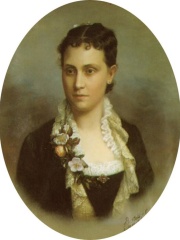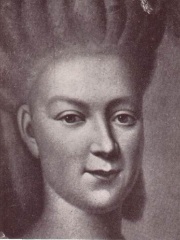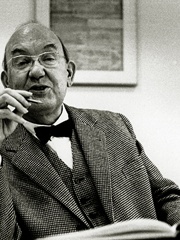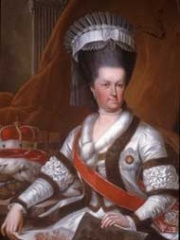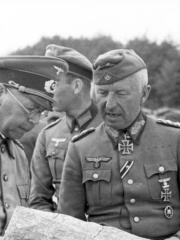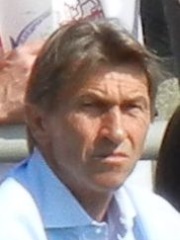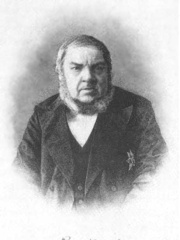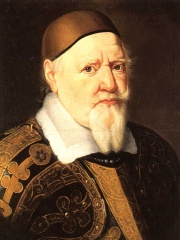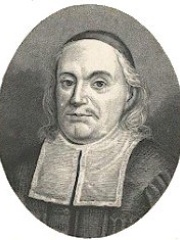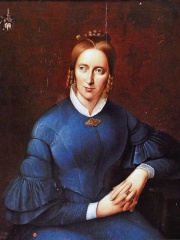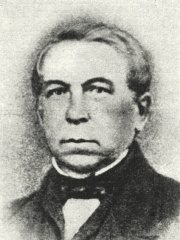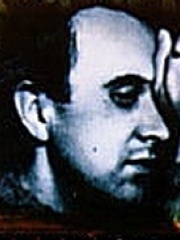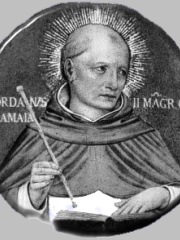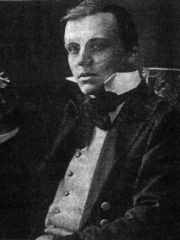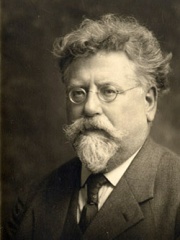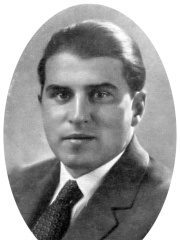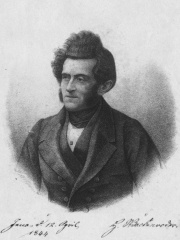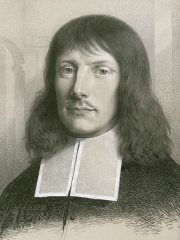WRITER
Margarete Buber-Neumann
1901 - 1989

 Margarete Buber-Neumann
Margarete Buber-Neumann
Margarete Buber-Neumann (née Thüring; 21 October 1901 – 6 November 1989) was a German writer. As a senior Communist Party of Germany member and Gulag survivor, which turned her into staunch anti-communist, she wrote the famous memoir Under Two Dictators. It begins with her arrest in Moscow during Joseph Stalin's Great Purge, followed by her imprisonment as a political prisoner in both the Soviet Gulag and the Nazi concentration camp system, after being handed over by the NKVD to the Gestapo during World War II. She was also known for having testified in the so-called "trial of the century" about the Kravchenko Affair in France. Read more on Wikipedia
Since 2007, the English Wikipedia page of Margarete Buber-Neumann has received more than 142,740 page views. Her biography is available in 19 different languages on Wikipedia (up from 18 in 2019). Margarete Buber-Neumann is the 1,950th most popular writer (down from 1,789th in 2019), the 2,081st most popular biography from Germany (down from 1,866th in 2019) and the 127th most popular German Writer.
Memorability Metrics
140k
Page Views (PV)
56.37
Historical Popularity Index (HPI)
19
Languages Editions (L)
6.33
Effective Languages (L*)
1.77
Coefficient of Variation (CV)
Notable Works
Page views of Margarete Buber-Neumanns by language
Over the past year Margarete Buber-Neumann has had the most page views in the English wikipedia edition with 22,182 views, followed by German (14,830), and French (9,462). In terms of yearly growth of page views the top 3 wikpedia editions are Slovak (945.24%), Czech (140.48%), and Basque (59.11%)
Among WRITERS
Among writers, Margarete Buber-Neumann ranks 1,950 out of 7,302. Before her are André Brink, Constantine of Preslav, Bernard Palissy, Jón Arason, Eugenio Barba, and Jane Jacobs. After her are Denis Fonvizin, Thomas Merton, Movses Kaghankatvatsi, Eugene Nida, Albert Memmi, and Anthony Trollope.
Most Popular Writers in Wikipedia
Go to all RankingsAndré Brink
1935 - 2015
HPI: 56.40
Rank: 1,944
Constantine of Preslav
900 - 1000
HPI: 56.39
Rank: 1,945
Bernard Palissy
1510 - 1589
HPI: 56.39
Rank: 1,946
Jón Arason
1484 - 1550
HPI: 56.38
Rank: 1,947
Eugenio Barba
1936 - Present
HPI: 56.38
Rank: 1,948
Jane Jacobs
1916 - 2006
HPI: 56.37
Rank: 1,949
Margarete Buber-Neumann
1901 - 1989
HPI: 56.37
Rank: 1,950
Denis Fonvizin
1745 - 1792
HPI: 56.36
Rank: 1,951
Thomas Merton
1915 - 1968
HPI: 56.36
Rank: 1,952
Movses Kaghankatvatsi
900 - 980
HPI: 56.36
Rank: 1,953
Eugene Nida
1914 - 2011
HPI: 56.36
Rank: 1,954
Albert Memmi
1920 - 2020
HPI: 56.35
Rank: 1,955
Anthony Trollope
1815 - 1882
HPI: 56.35
Rank: 1,956
Contemporaries
Among people born in 1901, Margarete Buber-Neumann ranks 101. Before her are Ludolf von Alvensleben, Henri Cochet, Ed Sullivan, Eiji Tsuburaya, Miklós Nyiszli, and Marino Marini. After her are Peter van de Kamp, Alexander Fadeyev, Otto Wächter, Melvyn Douglas, Fred Uhlman, and Cassandre. Among people deceased in 1989, Margarete Buber-Neumann ranks 87. Before her are Hans Hartung, Cesare Zavattini, Hibari Misora, Albert Bormann, Vasile Milea, and James Bond. After her are Józef Cyrankiewicz, Mihály Lantos, Giuseppe Siri, Nicolás Guillén, Barbara W. Tuchman, and Franz Binder.
Others Born in 1901
Go to all RankingsLudolf von Alvensleben
SOCIAL ACTIVIST
1901 - 1970
HPI: 56.72
Rank: 95
Henri Cochet
TENNIS PLAYER
1901 - 1987
HPI: 56.57
Rank: 96
Ed Sullivan
PRESENTER
1901 - 1974
HPI: 56.56
Rank: 97
Eiji Tsuburaya
WRITER
1901 - 1970
HPI: 56.51
Rank: 98
Miklós Nyiszli
WRITER
1901 - 1956
HPI: 56.50
Rank: 99
Marino Marini
SCULPTOR
1901 - 1980
HPI: 56.40
Rank: 100
Margarete Buber-Neumann
WRITER
1901 - 1989
HPI: 56.37
Rank: 101
Peter van de Kamp
ASTRONOMER
1901 - 1995
HPI: 56.37
Rank: 102
Alexander Fadeyev
WRITER
1901 - 1956
HPI: 56.25
Rank: 103
Otto Wächter
POLITICIAN
1901 - 1949
HPI: 56.03
Rank: 104
Melvyn Douglas
ACTOR
1901 - 1981
HPI: 55.95
Rank: 105
Fred Uhlman
WRITER
1901 - 1985
HPI: 55.85
Rank: 106
Cassandre
PAINTER
1901 - 1968
HPI: 55.71
Rank: 107
Others Deceased in 1989
Go to all RankingsHans Hartung
PAINTER
1904 - 1989
HPI: 56.81
Rank: 81
Cesare Zavattini
WRITER
1902 - 1989
HPI: 56.78
Rank: 82
Hibari Misora
ACTOR
1937 - 1989
HPI: 56.75
Rank: 83
Albert Bormann
POLITICIAN
1902 - 1989
HPI: 56.68
Rank: 84
Vasile Milea
POLITICIAN
1927 - 1989
HPI: 56.49
Rank: 85
James Bond
BIOLOGIST
1900 - 1989
HPI: 56.46
Rank: 86
Margarete Buber-Neumann
WRITER
1901 - 1989
HPI: 56.37
Rank: 87
Józef Cyrankiewicz
POLITICIAN
1911 - 1989
HPI: 56.30
Rank: 88
Mihály Lantos
SOCCER PLAYER
1928 - 1989
HPI: 56.28
Rank: 89
Giuseppe Siri
RELIGIOUS FIGURE
1906 - 1989
HPI: 56.27
Rank: 90
Nicolás Guillén
WRITER
1902 - 1989
HPI: 56.21
Rank: 91
Barbara W. Tuchman
HISTORIAN
1912 - 1989
HPI: 56.10
Rank: 92
Franz Binder
SOCCER PLAYER
1911 - 1989
HPI: 56.09
Rank: 93
In Germany
Among people born in Germany, Margarete Buber-Neumann ranks 2,081 out of 7,253. Before her are Princess Maria Anna of Hesse-Homburg (1785), Judith of Swabia (1054), Princess Isabella of Bavaria (1863), Princess Friederike of Hesse-Darmstadt (1752), Adolf Frederick I, Duke of Mecklenburg (1588), and Jan Tschichold (1902). After her are Princess Caroline Louise of Hesse-Darmstadt (1723), Erich Brandenberger (1892), Klaus Augenthaler (1957), Wolfgang Reitherman (1909), Johann Friedrich von Brandt (1802), and Franz Aepinus (1724).
Others born in Germany
Go to all RankingsPrincess Maria Anna of Hesse-Homburg
POLITICIAN
1785 - 1846
HPI: 56.39
Rank: 2,075
Judith of Swabia
1054 - 1105
HPI: 56.39
Rank: 2,076
Princess Isabella of Bavaria
COMPANION
1863 - 1924
HPI: 56.39
Rank: 2,077
Princess Friederike of Hesse-Darmstadt
POLITICIAN
1752 - 1782
HPI: 56.38
Rank: 2,078
Adolf Frederick I, Duke of Mecklenburg
NOBLEMAN
1588 - 1658
HPI: 56.38
Rank: 2,079
Jan Tschichold
POLITICIAN
1902 - 1974
HPI: 56.37
Rank: 2,080
Margarete Buber-Neumann
WRITER
1901 - 1989
HPI: 56.37
Rank: 2,081
Princess Caroline Louise of Hesse-Darmstadt
POLITICIAN
1723 - 1783
HPI: 56.37
Rank: 2,082
Erich Brandenberger
MILITARY PERSONNEL
1892 - 1955
HPI: 56.36
Rank: 2,083
Klaus Augenthaler
SOCCER PLAYER
1957 - Present
HPI: 56.36
Rank: 2,084
Wolfgang Reitherman
FILM DIRECTOR
1909 - 1985
HPI: 56.36
Rank: 2,085
Johann Friedrich von Brandt
BIOLOGIST
1802 - 1879
HPI: 56.36
Rank: 2,086
Franz Aepinus
PHYSICIST
1724 - 1802
HPI: 56.35
Rank: 2,087
Among WRITERS In Germany
Among writers born in Germany, Margarete Buber-Neumann ranks 127. Before her are Augustus the Younger, Duke of Brunswick-Lüneburg (1579), Paul Gerhardt (1607), Annette von Droste-Hülshoff (1797), Handrij Zejler (1804), Wolfgang Borchert (1921), and Jordan of Saxony (1190). After her are Hanns Heinz Ewers (1871), Yehuda Amichai (1924), Rudolf Rocker (1873), Carl Zuckmayer (1896), Wilhelm Heinrich Wackenroder (1773), and Joachim Neander (1650).
Augustus the Younger, Duke of Brunswick-Lüneburg
1579 - 1666
HPI: 56.81
Rank: 121
Paul Gerhardt
1607 - 1676
HPI: 56.79
Rank: 122
Annette von Droste-Hülshoff
1797 - 1848
HPI: 56.64
Rank: 123
Handrij Zejler
1804 - 1872
HPI: 56.58
Rank: 124
Wolfgang Borchert
1921 - 1947
HPI: 56.46
Rank: 125
Jordan of Saxony
1190 - 1237
HPI: 56.43
Rank: 126
Margarete Buber-Neumann
1901 - 1989
HPI: 56.37
Rank: 127
Hanns Heinz Ewers
1871 - 1943
HPI: 56.24
Rank: 128
Yehuda Amichai
1924 - 2000
HPI: 56.21
Rank: 129
Rudolf Rocker
1873 - 1958
HPI: 56.14
Rank: 130
Carl Zuckmayer
1896 - 1977
HPI: 56.06
Rank: 131
Wilhelm Heinrich Wackenroder
1773 - 1798
HPI: 56.06
Rank: 132
Joachim Neander
1650 - 1680
HPI: 56.03
Rank: 133


